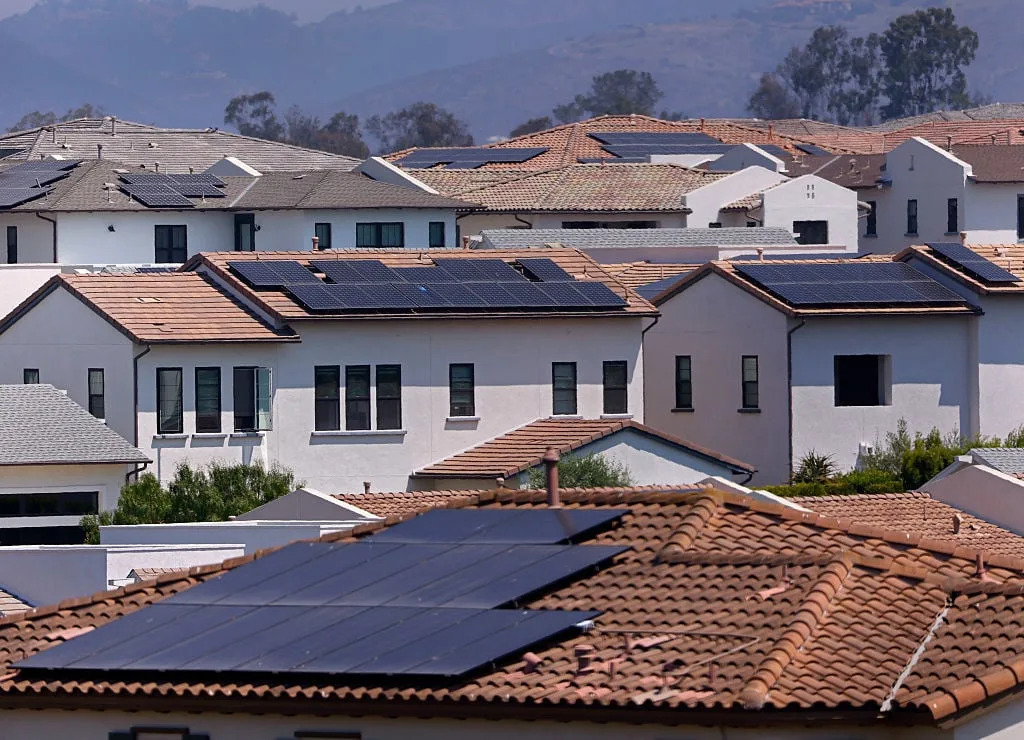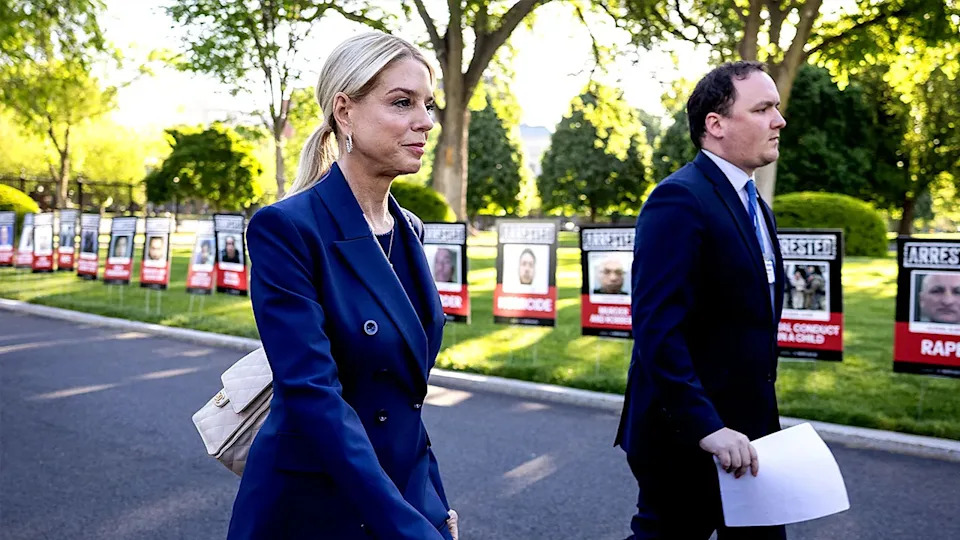
California’s premier “virtual power plant” program is already reducing the state’s reliance on polluting, costly fossil-fueled power plants. And that’s just the start of what the scattered network of solar and batteries could do to stymie rising utility costs — if the state Legislature can stave off funding cuts to the program, that is.
So finds a new analysis from consultancy The Brattle Group on the potential of the statewide Demand Side Grid Support (DSGS) program to help California’s stressed-out grid keep up with growing electricity demand. The program pays households and businesses that already own solar panels and batteries to send their stored-up clean power back to the grid during times of peak demand, like hot summer evenings.
Continuing the program’s payments to those customers to make their stored energy available could save all California utility customers anywhere from $28 million to $206 million over the next four years, the report found.
The findings come as state lawmakers attempt to rescue the DSGS program from a new round of funding cuts. Last year, California lawmakers slashed DSGS spending to deal with an unexpected budget shortfall. The situation is still troubled this year, and Democratic Gov. Gavin Newsom has proposed defunding the program further, leaving it little money to pay participants beyond this year.
But the program could regain its financial footing if newly introduced legislation becomes law.
This week, California Assemblymember Jacqui Irwin, a Democrat, released draft legislation that would allocate money to DSGS from the state’s much-contested Greenhouse Gas Reduction Fund, which is supported by payments from polluting companies. That draft legislation calls for depositing 5% of revenue collected by electric utilities for that fund into a new account to finance DSGS from 2026 to 2034. Lawmakers don’t have much time to move the proposal forward, with the state’s legislative session ending Sept. 12.
Saving the program would be a win for reducing the state’s sky-high utility costs, according to Ryan Hledik, a principal at Brattle and coauthor of the report. “It’s cheaper to pay customers to provide grid resources from technology they’ve already adopted than it is to go invest capital in new stuff,” he said, including the fossil-fueled generators now used to meet peak grid needs.
California has already committed billions of dollars on emergency backup generators and on keeping aging fossil-gas-fired power plants open past their planned closure dates, he noted. The high end of the savings DSGS could provide is based on the assumption that it “would be a substitute for spending money on more expensive emergency resources,” he said.
At the same time, DSGS could also bring down the “resource adequacy” payments shelled out by California utilities, community choice aggregators, and other power providers to secure enough grid resources to meet peak demand in future years. Those costs have been rising in California, though not as drastically as they have in other parts of the country.
Since its launch in 2023, the battery program Brattle analyzed, which is one of the four options for customers to participate in DSGS, has grown to a collective 700 megawatts of capacity. The report forecasts the program could nearly double its current capacity to reach 1.3 gigawatts by 2028, covering roughly half the total residential distributed-battery capacity expected to be online in the state by then.
That won’t happen without state funding for the program, however — and though some state lawmakers are attempting to save DSGS’s funding, it remains unclear if the money will be there for future years.
Relief on the way?
If Irwin’s proposed provision becomes law, it would supply roughly $70 million to $90 million per year to DSGS over the next five years, said Brad Heavner, executive director of the California Solar and Storage Association. DSGS needs at least $75 million this year to operate in 2026, according to a letter sent to California lawmakers on Tuesday by 35 companies, trade groups, and advocacy organizations active in solar, batteries, on-site generators, and demand response, including Heavner’s group.
The amount of funding dedicated under the proposed legislation “won’t be enough for all the program activity we expect — but it will be enough to have a core program,” he said.
DSGS’s cost-effectiveness, demonstrated by the Brattle analysis, should give lawmakers confidence that the money isn’t being wasted, Heavner said. “It’s great that the Brattle study finds there’s a two-for-one benefit — every dollar spent here saves two dollars” for utility customers across the state, he said.
Brattle’s research was funded by Sunrun and Tesla, two companies with longtime programs that sign up customers to make their excess battery capacity available for grid services. Both firms benefit from initiatives that boost the value of the rooftop solar and battery systems they sell to households in California and beyond.
But the study also matches broader research on how virtual power plants can reduce blackout risks and electricity price spikes on U.S. grids. VPPs are collections of homes and businesses with smart thermostats, grid-responsive EV chargers, water heaters, and other appliances that can reduce how much power they’re using, as well as rooftop solar-charged batteries or generators that can push power back to the grid as needed.
Under the Biden administration, the U.S. Department of Energy found that the hundreds of billions of dollars that consumers spend on EVs, rooftop solar systems, batteries, smart thermostats, and other appliances could provide 80 to 160 gigawatts of VPP capacity by 2030, enough to meet 10% to 20% of U.S. peak grid needs and save about $10 billion in annual utility costs. (The Trump administration has removed this DOE report from the internet, but archived versions are available.)
VPPs also pass the eye test: They’ve helped avoid blackouts in Puerto Rico, New England, and California this summer. States including Colorado and Virginia have passed laws or created regulations requiring utilities to expand VPPs.
DSGS, for its part, has “scaled in a way that folks can no longer poke holes in its reliability,” said Lauren Nevitt, Sunrun’s senior director of public policy. Sunrun has dispatched hundreds of megawatts from its customers’ batteries in California so far this summer, all during hours of the evening when wholesale electricity prices spike above $200 per megawatt-hour.
In a two-hour experiment last month, Sunrun and Tesla dispatched 535 megawatts of battery power to the grid in what utility Pacific Gas & Electric called “the largest test of its kind ever done in California — and maybe the world.”
Lining up a steady source of funding for years to come would give these participating companies confidence that their investments in DSGS won’t be left stranded by future budget cuts, Heavner said — and encourage even more investment going forward.
VPPs on the rise
Pressure to curb energy costs is particularly acute in California, where residential customers of the state’s three major utilities now pay roughly twice the national average for their power and where rates rose 47% from 2019 to 2023.
It is also among the best-positioned states to take advantage of VPPs to rein in those costs. California leads the country in rooftop solar, backup battery, and EV adoption, and a 2024 Brattle analysis found that VPPs could provide more than 15% of the state’s peak grid demand by 2035, delivering $550 million in annual utility customer savings.
DSGS is only one of a number of VPP options available in California. But advocates say it’s by far the most successful in a state that’s seen mixed progress on VPPs to date. In the past five years, stop-and-start policies from the California Public Utilities Commission have reduced overall capacity from demand-response programs that pay utility customers to turn down their electricity use to relieve grid stress.
DSGS, which is run by the California Energy Commission, has grown rapidly due to a combination of factors, said Edson Perez, who leads California legislative and political engagement for clean-energy trade group Advanced Energy United. It’s available to residents across the state, rather than being limited to individual utility territories and programs. It also has relatively simple enrollment and participation rules compared to many other programs, he said.
It can be tricky to quantify the costs and benefits of these kinds of programs compared to traditional utility investments in power plants or large-scale solar and battery systems. But Brattle’s new report is the “first analysis of what its value is out in the field,” he said, and the results show “it’s very cost-effective.”
Solar-charged batteries are also much less polluting than the state’s other emergency grid-relief resources, he said. DSGS is one of a set of emergency programs launched after California experienced rolling blackouts during summer heat waves in 2020 and more heat-wave-driven grid emergencies in 2022.
But most of the billions of dollars in emergency funding have gone to fossil-fueled generators. California had spent about $443 million on state-managed generators that burn fossil gas or diesel fuel as of December 2024, and has committed about $1.2 billion to keep fossil-gas-fired "peaker” plants in Southern California open until 2026, well past their scheduled 2020 closure date.
“We’re in a statewide affordability crisis,” Perez said. “Leveraging existing resources out there drives down costs for everyone.”







Comments